Bulletproof Decorating: Upholstery That Stands Up to Anything
http://decor-ideas.org 11/23/2013 21:50 Decor Ideas
The Flintstones had it easy. When all your furniture is made of rock, you never have to worry about food spills or the pet dinosaur leaving a calling card on the couch.
While few of us would be willing to trade our plush upholstery for a granite sofa, you can still get an interior that’s fairly bulletproof if you choose the right fabric. “Technology has really helped a lot,” says Lesli Ann Cone, a designer and fabric rep who owns A & D Studios in Washington. Today’s engineered textiles look increasingly like their natural counterparts, Cone says, but can withstand wear and tear much better. And many natural fabrics are nearly as durable. It all depends on what you choose.
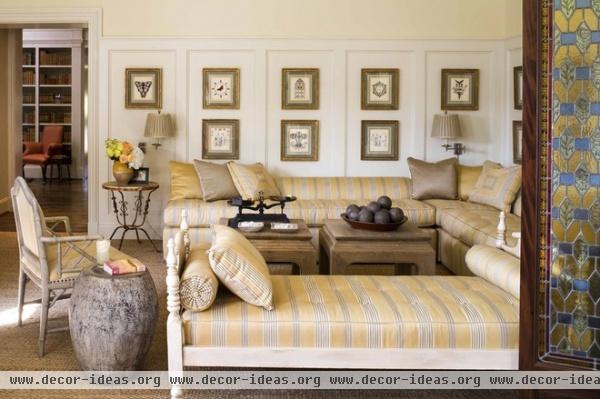
As a rule, engineered fabrics tend to be more durable than natural ones. And the engineered fabrics that stand up best to kids and pets are the ones originally designed for use on the patio.
“Don’t be afraid of using indoor-outdoor fabrics indoors,” says interior designer Amy Luff of Viva Luxe Studios in Bristol, Virginia. “They’ve come so far in technology, you can’t tell it’s outdoor fabric.” Case in point: the upholstery in this stylish interior concocted for a Dallas show house.
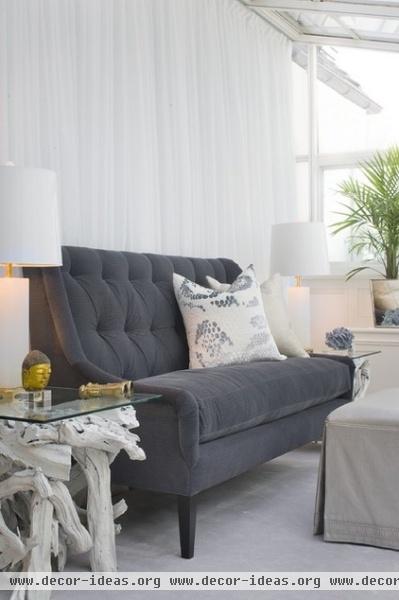
“Outdoor fabrics have become huge indoors,” says Cone. While early all-weather fabrics felt stiff and waxy, Cone says today’s versions — like this one from Holly Hunt — are just as supple as what you’d encounter indoors. “They’ve really been able to soften it up,” she says.

Solution-dyed acrylics are your best bet for indoor-outdoor fabrics. Popularized by Sunbrella and often referred to generically by that name, these textiles are available in a wide variety of colors and patterns, persuasively mimicking everything from toile to tweed. They resist fading, and spills just bead up on them.
But not all outdoor fabrics are created equal, cautions Luff. “Sunbrella touts certain qualities in terms of fade resistance and cleanability,” she says. “But don’t assume other indoor-outdoor dyed acrylic will be the same.”

Other engineered fabrics that stand up well to kids and pets are viscose and polyester — but try to avoid 100 percent polyester, as it can be stained by oils in skin or food.
New York designer Barbara Feinstein swears by Ultrasuede, which she used in the room shown here, while Luff loves the flannel suede available from Hickory Chair. “I’ve spilled you-name-it on it, and everything comes out,” she says.
You can also opt for contract fabrics — durable textiles specially fabricated for use in commercial buildings — although the selection is more limited, and your living room could end up looking like the lobby of a Best Western.

When it comes to natural upholstery, Pennsylvania designer Sherri Blum says one material stands head and shoulders above the rest. “Making the investment in leather is always my number-one recommendation,” she says. “You can’t beat leather. You can spray Windex on it, for God’s sake, and it cleans up.”

If you’re worried about your children or pets scratching the surface, Blum recommends going with a distressed leather, because blemishes will blend right in.
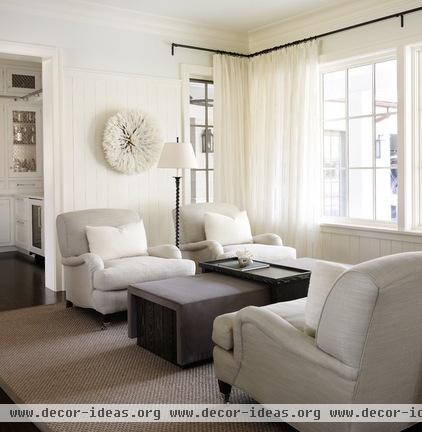
Other durable natural fabrics include wool, velvet, linen (especially machine-washable Belgian linens made in England or Italy) and linen velvet.

Mohair (shown here) is another hard-wearing choice. “If you’re going to put mohair on something, you'd better like it,” Cone cautions, “because it’s going to last a loooong time.”
It’s harder to generalize about cotton, because the category is so broad. Some are durable; others aren’t. Fabrics to avoid include silk, rayon and rayon-polyester blends.
Nearly as important as composition is country of origin, says Cone. As a rule she shies away from fabrics made in China. “For every good mill, there are a hundred that are horrible,” she says.
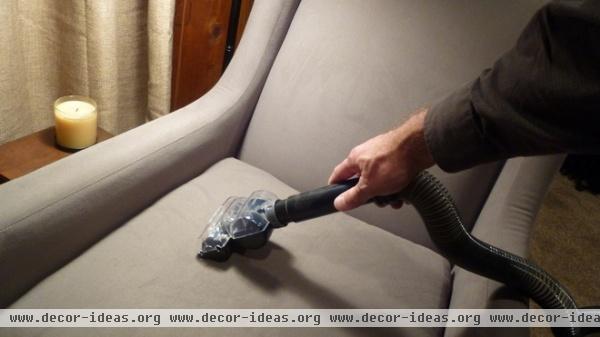
Even the most durable fabric will break down if you don’t maintain it. “The best thing you can do is vacuum your furniture once a month,” advises Cone, who says that dirt on the surface, combined with the friction of people moving back and forth, will wear out the material faster than anything else.
Another way to prolong the life of your upholstery is to apply a stain-resistant treatment (commonly called Scotchguarding, after the brand-name fabric protector). This process is most effective when it’s done in the factory, but you can also treat furniture after it's built.
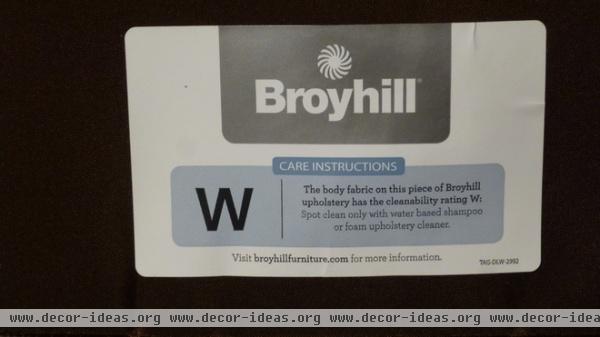
Going with a washable fabric is always a good bet. There are universal cleaning codes for fabrics; check the label or ask a salesperson to find out the code for your particular fabric.
Another fact to check is the fabric’s ability to withstand abrasion. This is usually measured by how many “double rubs” the material can endure before tearing. Look for at least 15,000 double rubs for decent durability; 30,000 or more is ideal.
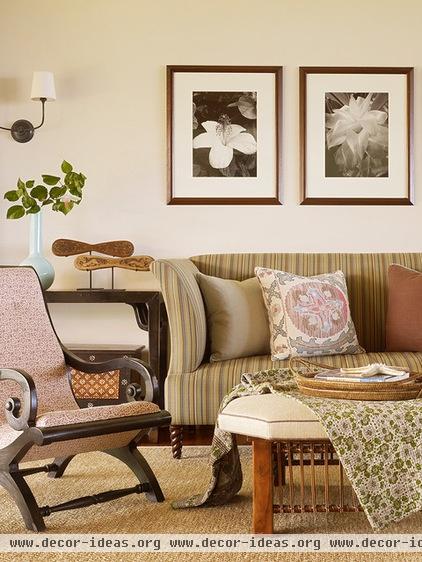
Patterned fabrics will hide damage better than plain fabrics. “The more coloring and patterning in your print, the better it’ll hold up to stains and wear,” says Luff.
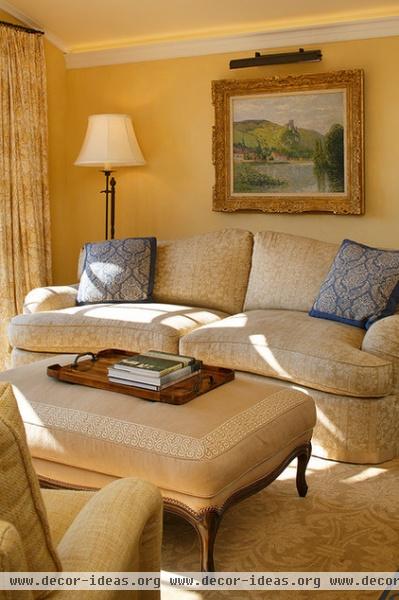
If you’re worried about growing tired of the pattern, or getting locked into the pattern should you choose to redecorate, go with a tone-on-tone design that’s subtler.

Or opt for a textured fabric. The variation in height and play of light and shadow across the surface will help obscure stains and wear. But run your fingernails across the surface first, to make sure it won’t snag or fray. “If you can pull it apart with your fingernail, a kid is going to be able to pull it apart or run toys over it and snag it,” says Luff.

Slipcovers can be a lifesaver when you have kids and pets — especially ones that you can toss into the washing machine. (The slipcovers — not the kids.) Lee Industries, for instance, offers a great selection of furniture with slipcovers that wash beautifully, Luff says.
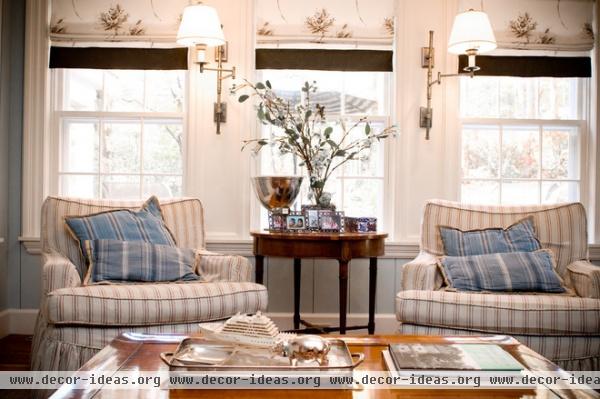
Even if a slipcover is labeled “dry clean only,” you might be able to launder it at home. It just depends on the fabric content, your laundering methods (use cold water and avoid the dryer), and your willingness to accept the consequences if the material shrinks.
More: What's That Smell? What to Do About Stinky Furniture
Related Articles Recommended












